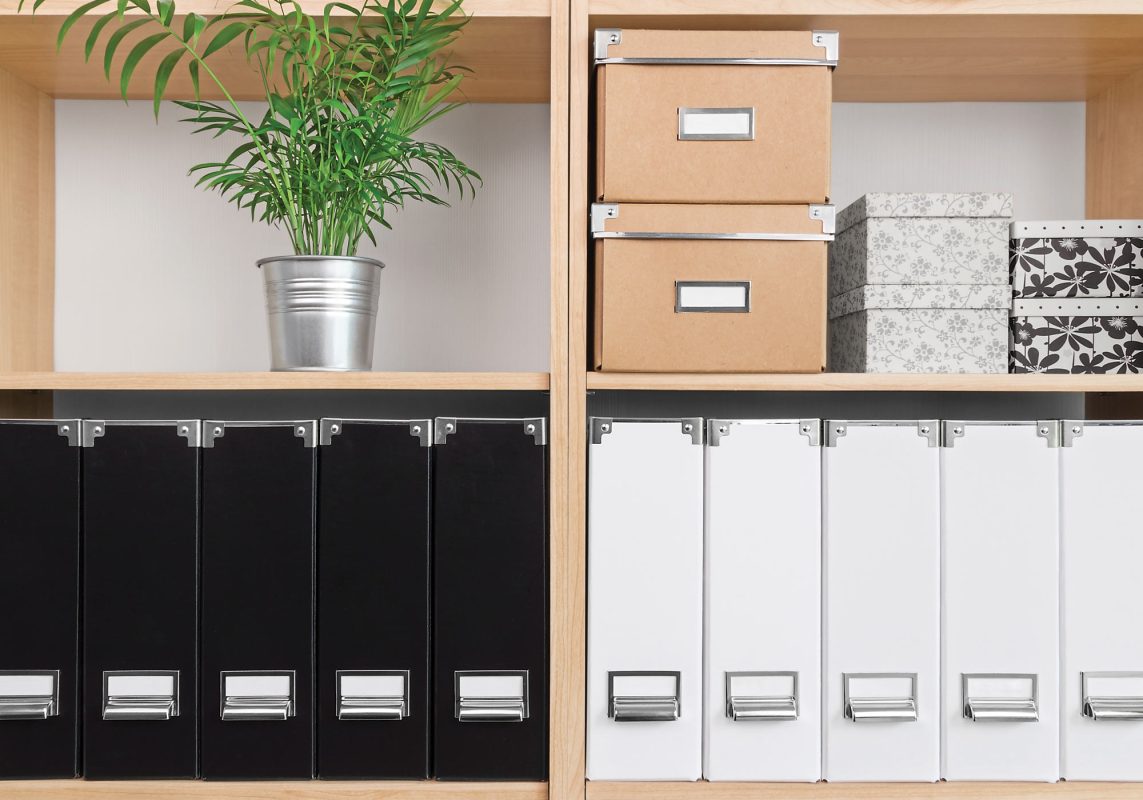HOW TO CREATE A FAMILY COMMAND CENTER AND KEEP YOUR HOME ORGANIZED
I once read that a messy desk indicates a chaotic life. I would quote the likely well-organized author, but I don’t know what book I read those wise words in or where that life-changing book went. I read it in college, when staying organized meant keeping up with social appointments (and a few school assignments). Now that I’m a mother of three, wife to a man with a demanding job, writer and (ahem) home-manager extraordinaire, staying organized requires constant diligence. All the things that need my attention—bills, artwork, library books, doctors appointments and invitations—eventually land on the desk in our kitchen. Even my husband plops his work down on the desk at the end of the day, hoping that I will use my magic mommy powers to make it disappear. The kitchen desk has become the tactical Command Center, where I keep my family’s plates spinning. Although it’s slightly messy, it helps me keep a chaotic life under control.Command Central in Your Home
 As moms, we keep our fast-moving families going strong. Who else will remember to pick up toilet paper at the store, to dress our children in the correct hue for Color Day at school, to send in a shoebox for that science project or to buy a birthday present for our mothers-in-law.
Whether it’s a desk, a countertop, a drawer or a cabinet, we all need a Command Center for our homes to keep our families running efficiently. Through trial and error, and a misplaced library book or two, I’ve learned that we also need a system for keeping the Command Center of the home organized, or else it quickly becomes a pile of chaos.
For those of us who aren’t Martha Stewart or Container Store aficionados, the following tips—both easy and inexpensive—will streamline the system for keeping your family moving.
As moms, we keep our fast-moving families going strong. Who else will remember to pick up toilet paper at the store, to dress our children in the correct hue for Color Day at school, to send in a shoebox for that science project or to buy a birthday present for our mothers-in-law.
Whether it’s a desk, a countertop, a drawer or a cabinet, we all need a Command Center for our homes to keep our families running efficiently. Through trial and error, and a misplaced library book or two, I’ve learned that we also need a system for keeping the Command Center of the home organized, or else it quickly becomes a pile of chaos.
For those of us who aren’t Martha Stewart or Container Store aficionados, the following tips—both easy and inexpensive—will streamline the system for keeping your family moving.
Basic Organization Strategies
Perhaps you’ve let yourself go. You’re hiding your “loose” organizational muscles under the metaphorical baggy sweatpants. Thankfully, organizing the Command Center of the home is much easier, and less torturous, than whipping a not-so-tight body into shape. Simply designate a day to do a foundational cleaning using the following strategies. 1. Tackle the Piles. Take everything out of the drawers and cabinets and everything off of the counter of your Command Center. As you do so, throw away anything you no longer need or want. Ask yourself: Is this worth keeping? Will I need it again? Can I find it easily some place else? If it’s a magazine or packet of papers, do I need all of it? 2. Sort and Categorize. When everything is out and you’ve trashed or given away what you don’t need, group similar things together. My Command Center includes a drawer of office supplies that I use most often: pens, stamps, scissors, sticky notes, cell phone cords, computer cords, address book and calculator. I also have groupings of records, correspondence, artwork and bills. 3. Assign a Home. Each grouping needs a home. The most-used things need special consideration; they will need to be easily accessible. As much as possible, make your computer an assigned home so you can reduce piles and clutter. For example, keep your calendar, list of gifts to buy, gift ideas, schedule for babysitters and addresses on the computer. 4. Contain Yourself. You don’t have to spend a lot of money to organize your Command Center. Slide plastic carryout containers into a drawer for pens, sticky notes and paper clips. A small basket can hold your kids’ handheld video-game players and games, as well as stickers and markers. Other possible organizational tools include a plastic file folder from an office-supply store for paper records, a box to hold stationery and a basket for bills.Establish Organizational Ground Rules for Your Family
Once you’ve cleaned out, sorted and designated a home for everything, enjoy your millisecond of perfection. The next part is harder: developing a flow for how things will arrive at and leave the Command Center. In other words, how will you stay organized? The key is not only to develop a system but also to explain to each family member how they play a part in it. Establish ground rules and encourage everyone’s participation. The following suggestions will help you get started in creating those ground rules. 1. Never Leave Things in the Car. Make it a habit to bring in everything—sports equipment, backpacks, purses and trash—from the car each time you get home. This reduces the chaotic morning rush to get everyone out the door for school because no one is searching for a lunchbox or library book. 2. Deal With It Immediately. Whatever it is that comes through the door, whether in a child’s backpack or in the mail, do something with it immediately, or at least once a day. Open the mail, throw away what you don’t need, and separate bills and put them in their place. You may have several piles for bills, invitations, and homework or study guides. One or two piles aren’t the enemy of organization, but giving your attention to the piles on a daily basis will prevent them from procreating. I have one general “to-do” pile that I go through each afternoon after my kids come home from school and one pile of bills that I go through near the beginning of the month. 3. Establish a Weekly Time of Communication. Spousal communication concerning schedules, needs and activities is essential to successful Command Center organization. Determine a time each week that you’ll sit down and discuss the calendar. My husband sets an alarm on his phone each Sunday evening that reminds us to sit down with our calendars and hash out the week. This conversation sets my to-do list and helps me anticipate my family’s needs.Addressing Common Areas of Chaos
After you’ve cleaned out, developed a system and explained it to the family, you may find certain areas clogging the flow in and out of the Command Center. The following tips will help you with your problem areas. The Family Calendar. For my bustling family, this has been a problem area. We solved it by using Google Calendar, a scheduling system anyone with a Google account can access. By linking our calendars, my husband and I can see anything the other has added to the schedule. A similar family-scheduling program, Cozi.com, uses color-coding to show each member’s activities and also maintains grocery and task lists. Shopping. Use a magnetic notepad for a shopping list that covers the main stores you frequent. Place it on the refrigerator where every family member can see (and reach) it. Before you run errands, tear off the list and put it in your purse, along with a small accordion file that holds your clipped coupons. Even better: Plan the week’s menu and have the coupons you’ll need set aside for your shopping trip. Birthdays. At the beginning of the year, purchase a new calendar. Using your previous calendar, copy important birthdays into the new one using bright red ink. Use it as your everyday calendar so that, as you look at your monthly schedule, you are reminded of upcoming birthdays. An online calendar can be used for the same purposes. Establish a gift closet near the Command Center that you add to when prices are right or when you find the perfect gift for a loved one. In mine, I have baby-shower gifts, toys for my kids, birthday gifts for other kids’ birthday parties, and a few gifts I selected for specific people. Your gift closet should also include a stocked card box, gift bags, wrapping paper, ribbon and tissue paper. Schoolwork/Artwork. Schoolwork should leave backpacks for an established homework period and be immediately returned upon completion. Backpacks should then go back to their resting spot. Ongoing homework projects remain in a “to-do” pile until they are finished. For artwork, designate a place where your kids’ Picasso drawings can be on display. We use the refrigerator, the windows near our kitchen table and the walls in the playroom. As new masterpieces are made, they replace old artwork. When I take down artwork, I note on the back who made it and when, and I temporarily store “keepers” in a Command Center cabinet. At the end of the school year, I sort the pile by artist and make a file for the year of special school and artwork. These files are kept in a plastic keepsake tub in the attic.
Bills. If possible, go paperless. Most services and banks provide online payment options and will do the work for you. If you choose to receive paper bills, designate an important place for them in your Command Center, such as a graduated sorter or basket. Pay all of your bills on one day, stamp them and then note the date they’re due on the outside of the envelope. Keep them in full view so that as one is coming due, it can be mailed.
Records. Purchase an accordion file at an office-supply store for records, such as vaccination records, insurance information and paystubs. Keep the file in the Command Center. Birth certificates, social security cards, titles, licenses and other vital records should be in a locked fire safe, tucked away in the house.
Seasonal Decorations. Buy large plastic tubs in colors representative of specific holidays for storing seasonal decorations. I have one for all holidays that aren’t Christmas and several for Christmas, including a few smaller tubs just for ornaments. The Christmas tubs stay in the attic, but the non-Christmas tubs and seasonal wreaths stay within reach in a hall closet, close to the Command Center. Anytime a seasonal tub is out, I spend a few moments sorting out items that I no longer use.
Backpacks, Coats, Shoes. Establish a specific place for kids to load and unload when coming and going. A mudroom is ideal, but if you don’t have one, use a coat rack and plastic tub near the garage door. As soon as backpacks are brought in from the car, empty them of anything needing attention and return them to their place on the coat rack. Belongings that are similar, such as shoes or hats, need easily identifiable markings for kids (and parents). Use a different color or dots for each child. One dot for the oldest can easily become two dots when it is handed down to the second child. For socks and underwear, purchase a different brand for each child so laundry is quick and easy.
An organized Command Center is good, but a system that enables its maintenance is even better, because it allows for ongoing success and extinguishes low-grade mess stress. An ordered Command Center may not be perfect or pile-free, but it promises to keep the chaos of a fast-moving family to a minimum.
Schoolwork/Artwork. Schoolwork should leave backpacks for an established homework period and be immediately returned upon completion. Backpacks should then go back to their resting spot. Ongoing homework projects remain in a “to-do” pile until they are finished. For artwork, designate a place where your kids’ Picasso drawings can be on display. We use the refrigerator, the windows near our kitchen table and the walls in the playroom. As new masterpieces are made, they replace old artwork. When I take down artwork, I note on the back who made it and when, and I temporarily store “keepers” in a Command Center cabinet. At the end of the school year, I sort the pile by artist and make a file for the year of special school and artwork. These files are kept in a plastic keepsake tub in the attic.
Bills. If possible, go paperless. Most services and banks provide online payment options and will do the work for you. If you choose to receive paper bills, designate an important place for them in your Command Center, such as a graduated sorter or basket. Pay all of your bills on one day, stamp them and then note the date they’re due on the outside of the envelope. Keep them in full view so that as one is coming due, it can be mailed.
Records. Purchase an accordion file at an office-supply store for records, such as vaccination records, insurance information and paystubs. Keep the file in the Command Center. Birth certificates, social security cards, titles, licenses and other vital records should be in a locked fire safe, tucked away in the house.
Seasonal Decorations. Buy large plastic tubs in colors representative of specific holidays for storing seasonal decorations. I have one for all holidays that aren’t Christmas and several for Christmas, including a few smaller tubs just for ornaments. The Christmas tubs stay in the attic, but the non-Christmas tubs and seasonal wreaths stay within reach in a hall closet, close to the Command Center. Anytime a seasonal tub is out, I spend a few moments sorting out items that I no longer use.
Backpacks, Coats, Shoes. Establish a specific place for kids to load and unload when coming and going. A mudroom is ideal, but if you don’t have one, use a coat rack and plastic tub near the garage door. As soon as backpacks are brought in from the car, empty them of anything needing attention and return them to their place on the coat rack. Belongings that are similar, such as shoes or hats, need easily identifiable markings for kids (and parents). Use a different color or dots for each child. One dot for the oldest can easily become two dots when it is handed down to the second child. For socks and underwear, purchase a different brand for each child so laundry is quick and easy.
An organized Command Center is good, but a system that enables its maintenance is even better, because it allows for ongoing success and extinguishes low-grade mess stress. An ordered Command Center may not be perfect or pile-free, but it promises to keep the chaos of a fast-moving family to a minimum.
is the lone female in the house she shares with her husband, three boys and a fish named Fred. Follow her family at hooverhousehold.blogspot.com.
YOU MIGHT LIKE




